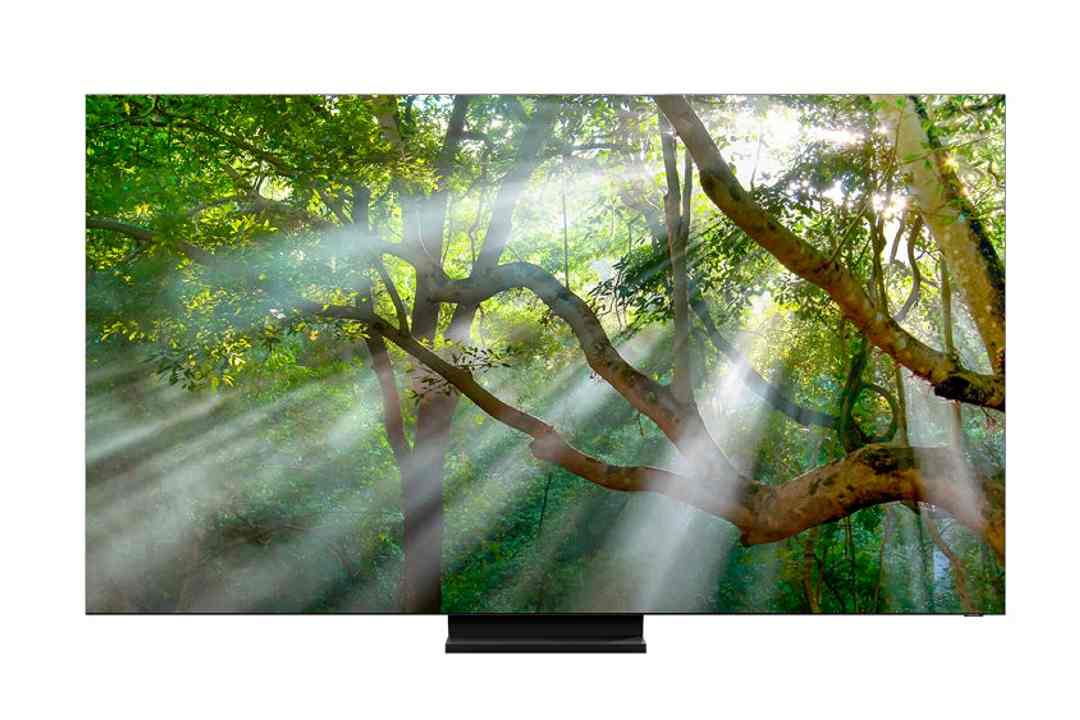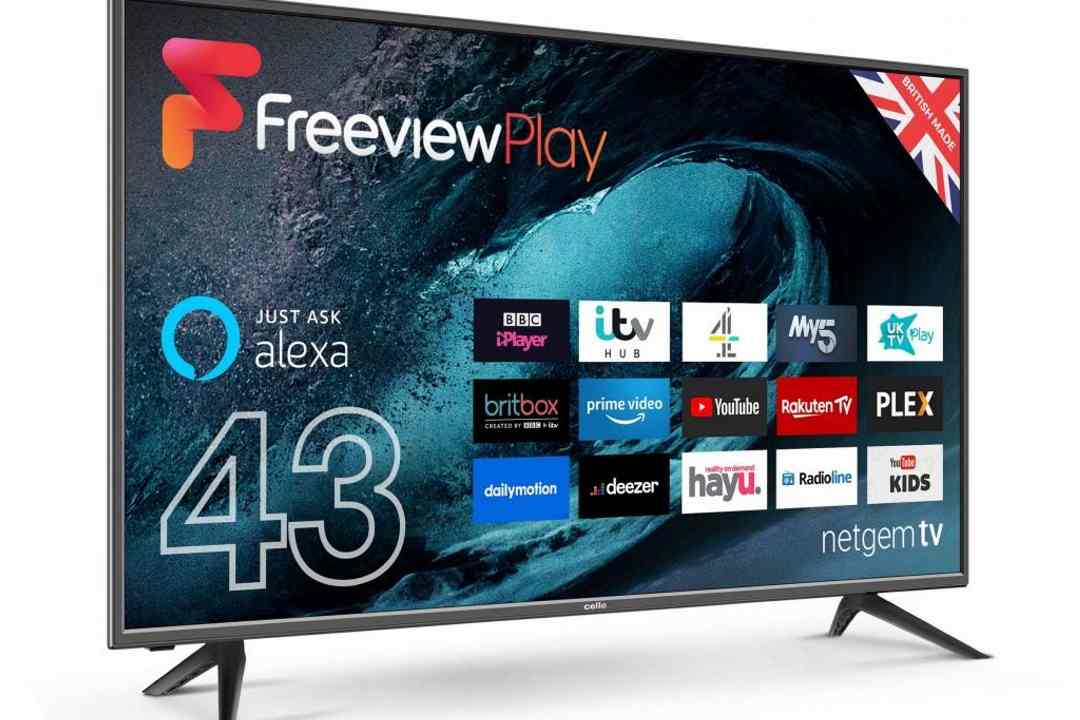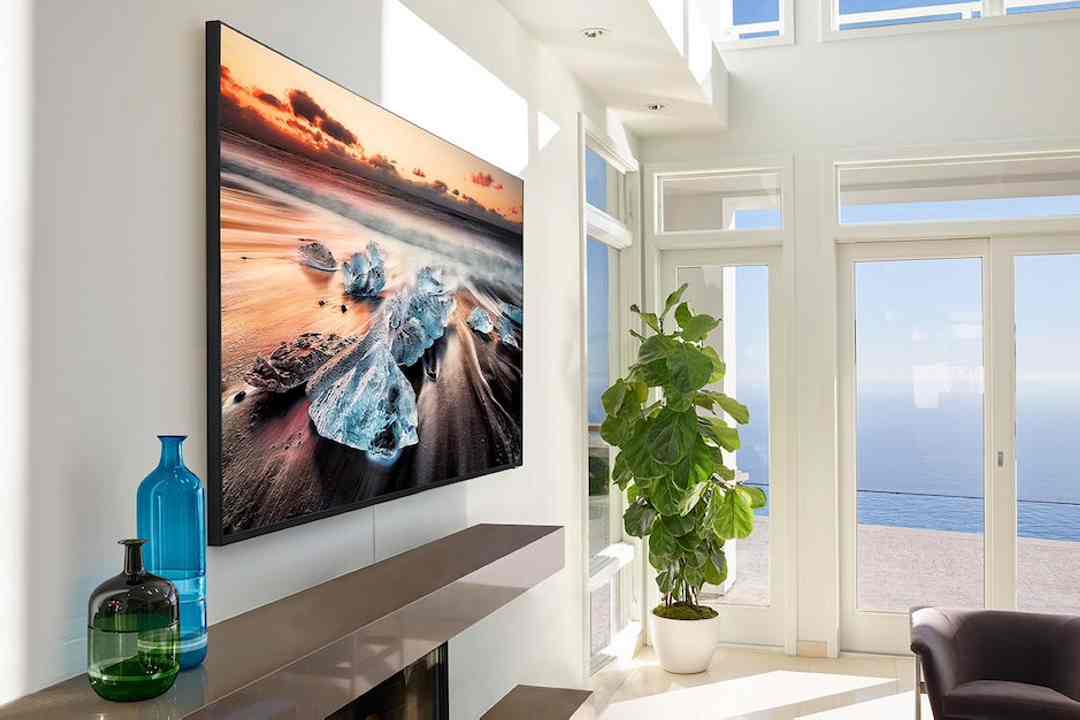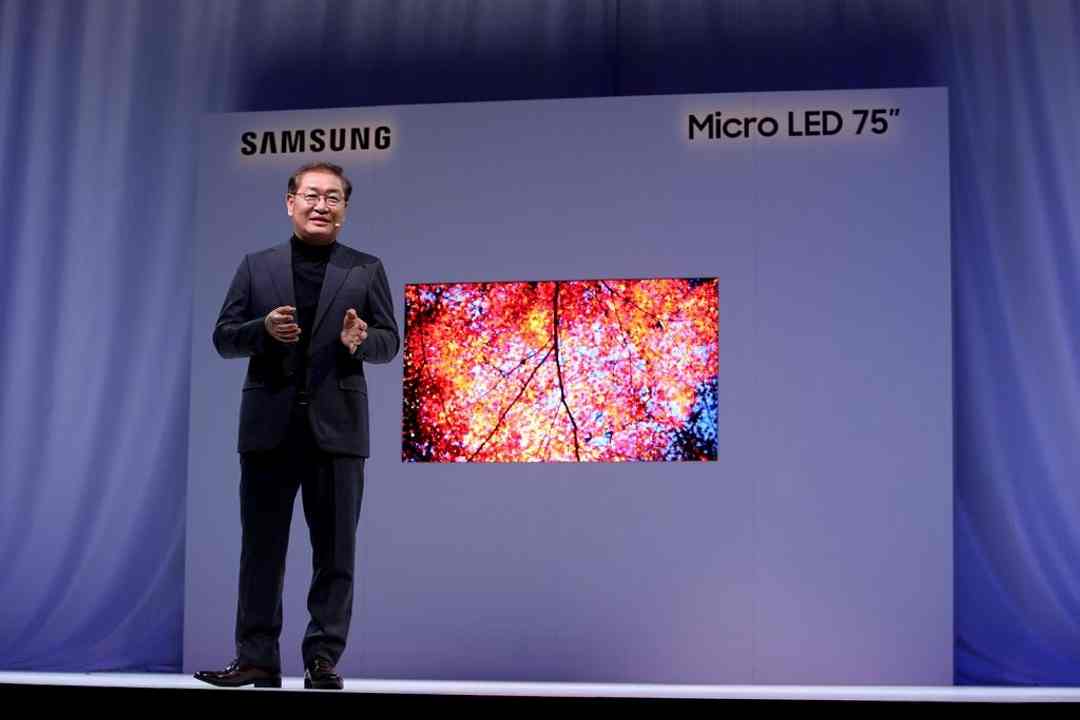
With its combination of 8K resolution, ground-breaking processing and remarkable new backlight controls, the Samsung QE75Q950TS is capable of delivering simply the best pictures ever seen from an LCD television. Arguably, depending on where your image preferences lie, the best pictures of any TV, period.
Pros
- Spectacular picture quality with a wide range of resolutions
- Beautiful, cutting edge design
- Innovative and effective object tracking sound system
Cons
- One or two very rare backlight glitches
- It will be too expensive for most households
- No Dolby Vision support
Key specifications
- 75-inch LCD TV with a native 8K resolution
- HDR10, HDR10+ and HLG HDR
- Eden/Tizen smart platform
- Object Tracking Sound+ audio system
- 8K Quantum AI processing with Deep Learning
The Samsung QE75Q950TS is a 75-inch TV from the brand’s 2020 flagship range of 8K TVs.
It boasts a new video processor that includes elements of deep learning; a new audio system that places sounds accurately on the screen; and a spectacular new frame-free design. Does it really have what it takes, though, to justify a £7,999 price tag?
Price and availability
At the time of review the QE75Q950TS had an RRP of £7999/€8000/AUD$13499. The 75-inch model is not available in the US (only the 85-inch is), and the Q950TS is not to be confused with the Q900T, which has a similar spec but loses the No Gap wall mount and One Connect box of the flagship 8K TV. The 75-inch Q950TS can be found for a discounted price of £5999 online.
Design and build quality
- Screen tilts backwards slightly
- Comes with One Connect box that funnels power, audio and visuals to TV
- Bit chunky in terms of build
The QE75Q950TS is the proud owner of what Samsung likes to call an Infinity design, which means it has practically no bezel around the screen. The screen frame is so thin that from typical viewing distances you don’t see it. At least when the screen is pumping out its gorgeously aggressive pictures.
As well as making the TV look cutting edge and futuristic, the incredibly trim bezel also means that you feel more immersed in the screen’s pictures.
The screen leans back slightly on its stand, which won’t be to everyone’s tastes. Certainly, if you’re putting it on a relatively high bit of furniture, the tilt back can cause the image to angle in at the top. This is only a minor gripe in the grand scheme of things, though. And you won’t mind the lean back at all if your seating position is reasonably high relative to the TV.
A screen without a frame clearly deserves not to have its design integrity compromised by lots of ugly cabling. So all Q950TS models ship with external One Connect boxes that carry all the TV’s connections and attach to the TV via just a single cable.
The Samsung QE75Q950TS is a bit chunkier around the back than many of today’s premium TVs. It makes up for this, though, by being the same depth across its entire rear, with no unseemly bulges.
Naturally, the QE75Q950TS gets Samsung’s Ambient Mode feature. This enables the screen to show (with minimal power consumption) a photograph, artwork or video screen saver when the TV isn’t being used, to save your living room from having a gaping 75-inch black hole in it.
It ships with two remote controls: a fairly standard (but easy to use) button-packed one, and a sleek ‘smart’ one with a metallic finish and stripped-back button count. The smart remote will get the most use after initial set up – especially as it carries a mic button for accessing Samsung’s voice recognition system.
Features
- Supports Samsung’s Q-Symphony audio
- Can handle 4K@120Hz and 8K@60Hz
- New Filmmaker Mode
One of the QE75Q950TS’s most startling new features is hinted at by its gorgeous bodywork. If you look closely at the set’s sides, you’ll see they’re grilled. This is because they house an array of speakers firing from all four of the TV’s sides.
These innovatively integrated speakers are combined with no less than eight larger drivers on the TV’s rear to deliver what Samsung calls Object Tracking Sound+.
This sees the wealth of speakers working with a proprietary processing system to deliver sound effects that seem to be coming from exactly the position on the screen they’re supposed to be coming from. So during a demo of a motorboat driving in a circle around the screen, you can clearly hear the sound tracking the circular motion.
Another new audio feature, Q-Symphony, enables the QE75Q950TS’s speakers to work in conjunction with Samsung’s 2020 soundbars, rather than the soundbar simply replacing all of the TV’s speakers. This can combat the issue heard with some soundbars where sound effects could appear to be coming from below the onscreen action.
The QE75Q950TS carries a couple of key new picture features. First, the latest Quantum 8K processor now benefits from a deep learning component. This is predominantly focused on delivering superior upscaling of sub-8K content, especially in areas of extremely fine detail: clothing weaves, brickwork textures, wallpaper designs, that sort of thing.
Second, while the QE75Q950TS has the usual full array local dimming (FALD) lighting set up you’d expect on a premium Samsung TV, this time it’s backed up by a new power management system. This can redirect power from dark parts of the picture to bright ones, potentially considerably boosting contrast.
The new processor also introduces an Adaptive Picture mode. This intelligently manipulates the picture to compensate for the impact of changing light levels in your room. This new mode combines ambient light readings with analysis of the picture content so that it only adjusts image elements that need adjusting. So, for instance, it can raise the brightness of dark areas to bring out shadow detail without also unnecessarily raising the brightness of light picture areas.
There be speakers under them there grilles.
Samsung’s Eden smart system is broadly unchanged from what’s gone before, which is no bad thing given that it fits pretty much every app known to man into a compact, easy to customise interface. Disney+, Apple TV, Netflix, Prime Video, Rakuten TV and all the UK’s key catch up services are present and correct. Though the latter don’t come in the convenient Freeview Play ‘container’ found on most other TVs.
The TV supports 4K (or 8K when it arrives) and HDR from any video streaming app that carries them. Though Samsung still refuses to support Dolby Vision, so the HDR streams are limited to either basic HDR10, HDR10+ (which, like Dolby Vision, adds extra scene by scene data to improve HDR playback), and the HLG format for broadcasts and live streams.
Voice control is possible via built-in Bixby or Alexa systems, and Google Assistant support is going to be added soon by a firmware update.
Filmmaker Mode was created in conjunction with Hollywood creatives, this and essentially turns off most of the TV’s processing to deliver, supposedly, a picture that more closely resembles the way its creators’ intended it to look.
Connections on the external One Connect box include four HDMIs and three USBs. Only one of the HDMIs is officially labelled as 2.1, and can handle 8K at 60Hz and 4K at 120Hz. It’s a pity there aren’t at least two such HDMIs given that both the Sony PS5 and Xbox Series X consoles will have HDMI 2.1 outputs.
Talking of gaming, Samsung has seriously upped its appeal to gamers. For starters, input lag with Game mode active has been reduced to just 10ms. The lowest figure I’ve seen on a TV to date. There’s also a handy option to call in some gentle motion processing while gaming that increases input lag to around 27ms, but delivers a much more comfortable look to games where you don’t need hair-trigger reflexes. Plus, there’s support for variable refresh rates via the FreeSync platform, and Auto Game Mode activation when a game source is detected.
Do note that the Game mode turns off many of the QE75Q950TS’s backlight controls, reducing black levels and increasing backlight blooming.
Finally on the feature front, it’s good to find support off the bat this year for eARC. Which means the HDMIs will pass Dolby Atmos or DTS:X lossless sound to external audio devices.
Set up
- Default is a good mode to start with
- Dynamic should be avoided
- Movie mode tracks closely with mastering standards
Time was when setting up a Samsung TV was a complicated job, thanks to the brand’s habit of using really unhelpful presets. This has largely been fixed on the QE75Q950TS.
There are plenty of speakers on the Samsung QE75Q950TS’s rear, too.
The Standard default mode is a great starting point for typical living room use, providing enough brightness and contrast to counter ambient light. It also gets more value from the screen’s 8K sharpness and QLED (Quantum Dot-based) colour features.
Movie mode is for people who want a picture that tracks close to the established mastering standards. This reins in much of the technology that arguably makes the QE75Q950TS’s picture so spectacular, but it’s much more enjoyable and effective than any of Samsung’s previous Movie modes especially as it removes the previous yellowish tint.
The Natural preset gives you yet a third eminently watchable option right out of the box. This pushes colour harder than the other two useful modes, but keeps brightness levels low versus the Standard setting. In doing so, it offers an interesting mid-point between Standard and Movie.
The Dynamic mode is best avoided since while it’s initially spectacular, you soon start to see that it causes all sorts of distracting problems. And, quite possibly, sunburn.
Samsung has dramatically improved its basic motion handling this year, so most users won’t feel the need to turn on Samsung’s motion processing. If you do want to reduce judder with 24 frames-per-second movies, though, choose Custom and set judder and blur reduction to less than five.
Noise reduction is best left off for all native 8K and good quality 4K sources. It can be useful, though, for relatively grubby looking 4K and grainy HD sources.
Normally I’d advocate tinkering around with a combination of the Contrast Enhancer and Local dimming features on Samsung’s TVs. With the QE75Q950TS, though, the presets mentioned above feel quite well tuned. And the extra backlight power control system makes it more difficult to keeping everything in balance if you start changing things around.
One last tip would be to turn on either Samsung’s Intelligent or Amplify audio settings to make the sound much fuller.
Picture quality
- Meets the CTA’s criteria for real 8K picture quality
- Impressive upscaling
- Rich and bright colours
Samsung’s new processor and backlight system have a much more significant impact on picture quality than I’d expected. Especially when you also add in the apparent use of a radically different panel structure.
This structure reveals itself as soon as you clock how incredibly sharp and detailed the QE75Q950TS’s pictures look compared with Samsung’s 2019 8K TVs. Edges look cleaner, textures look more refined, and there’s more depth of field. The whole image just looks more 8K even when you’re watching native 8K content (revealing that we’re not just talking here about the benefits of Samsung’s improved upscaling system).
Note that the native 8K content used for this review was predominantly the same ‘nature’ footage (played from USB) that’s also available in 4K on the Spears & Munsil UHD HDR Benchmark 4K Blu-ray. This – like almost all 8K content right now – is not currently available to the general public.
If you get up close and personal to the screen to try and explain the improved sense of sharpness and detail, you’ll see that the slightly odd horizontal line structure noticeable in Samsung’s 2019 8K screens has been replaced by a much cleaner, more defined, more typical individual square pixel structure. This results in sharper looking edges, and more colour and pixel definition.
Also, crucially, it sees the QE75Q950TS meeting the definition of a ‘real 8K’ TV as defined by the Consumer Technology Association in the US. Something last year’s Samsung 8K TVs did not.
The brains behind the beauty.
There is, though, a trade-off for this resolution boost: reduced viewing angles. The unusual structure of the 2019 panels was created to ‘solve’ LCD’s traditional viewing angle limitations. So walking this structure back a bit sees the QE75Q950TS losing a little contrast when your viewing angle gets to around 35 degrees or more.
Colour, though, retains much of its richness from wide viewing angles, and overall the balance Samsung has now struck between better resolution and viewing angles seems to be a very sensible compromise.
Samsung’s new upscaling engine, meanwhile, delivers a potent improvement over any previous upscaling solution I’ve seen. Detail levels with upscaled 4K images are phenomenal, delivering pictures that look clearly sharper and more textured than they ever have even on the best native 4K TVs.
The Deep Learning component of Samsung’s latest processor is especially evident over extremely complex image areas. Deep Learning requires so much power and research to work that it’s pretty much impossible for any consumer TV now to apply Deep Learning across the entire image. Instead, Samsung reserves it just for the most heavily textured, finely detailed parts of the picture. But it still appears to make an incredible difference to the all-round upscaled picture quality, bringing out details in 4K sources that I swear I’d never felt aware of before.
It does this, too, without causing or exaggerating video noise. On the contrary, its processing is uncannily good at being able to tell the difference between unwanted noise, natural grain, and actual picture detail.
Even HD sources are upscaled to the QE75Q950TS’s native 8K pixel count so well that you get a picture that’s actually a good watch rather than something you just have to tolerate until you can get back to at least a 4K source again.
The Samsung QE75Q950TS sits flat when hung on a wall, but leans back slightly on its desktop stand.
This ground-breaking upscaling performance is critical, given most of us will still spend our time forced to watch 4K and HD.
The new backlight system has a transformational impact on picture quality, too. Black levels get deeper than they did on last year’s Samsung 8K TVs, for starters, yet at the same time typically show much more shadow detail in dark areas.
Even better, black levels look far more even across the screen. There’s no clouding, even in the most extreme corners or edges. And blooming, where low-level light ‘spillage’ spreads out around stand-out bright image elements, is also pretty much completely removed. At least if you’re not watching from an angle. This is a genuinely remarkable achievement for such a bright LCD TV.
That brightness isn’t actually any higher than that of 2019’s Samsung 8K TVs. The dynamic mode measures a seriously punchy 3,100 nits when using a white HDR window that covers 10% of the screen. But this drops to 1700 nits for the Standard mode, 1600 nits in Movie mode, and 1149 nits in Natural mode.
While the QE75Q950TS doesn’t measure significantly brighter than the Q950Rs from last year, though, its pictures do look punchier. This is for two reasons. First, the new backlight power management enables the screen to make small, stand-out bright parts of otherwise dark pictures retain more brightness than they did on last year’s Samsung TVs. Second, this extra brightness for small light objects is achieved without clouds of extraneous light appearing around them.
The extra sense of intensity and consistency the new level of local light control gives to dark HDR scenes can’t be overstated. It almost miraculously tackles one of LCD technology’s thorniest issues – and targets one of OLED technology’s traditional strengths. All while hitting overall higher brightness levels than OLED can.
The Samsung QE75Q950TS unlocks more of the potential of its Quantum Dot-based colour system than last year’s Q950Rs did, too. Saturations with HDR content are more vibrant, especially in the brightest picture areas. And this extra richness helps HDR/wide colour images look more consistently balanced and natural. Especially when it comes to skin tones.
Given that colour performance slipped back slightly with last year’s Q950Rs from Samsung’s first generation of 8K TVs, I assume that the improved colour is again associated with the shift back to a more traditional panel design for the 2020 models.
While I’ve focused mainly on HDR performance so far, given that this is very much what the TV is designed for, it also adapts itself excellently to SDR. Colours are toned down without losing balance or naturalism, and the set still finds plenty of nuance and subtlety in SDR’s much more limited light range.
The Standard preset manages to give SDR a pleasant contrast and brightness ‘lift’ I think many users will enjoy once they’ve been spoiled by the TV’s HDR heroics. But the Movie mode is, again, much more successful as an ‘accurate’ SDR setting out of the box than it has been with previous Samsung TV generations.
The only significant problems I could find with the QE75Q950TS’s pictures were some backlight flickering and very localised areas of lost shadow detail. These problems really do only appear extremely rarely, though, and are limited to infamously difficult-to-show dark scenes. But the backlight system is so typically immaculate that when the occasional errors do appear, they do kind of jump out at you.
Samsung believes it will be able to sort even these small niggles out via a future firmware update. But I will need to see that update in action myself before I can comment on how successful it is.
Audio quality
- Impressively far-ranging soundstage
- Precise placement of effects
- Lacks forward projection
Turning to the QE75Q950TS’s innovative audio system, in many ways, it works brilliantly. Its ability to position sound on the screen in exactly the right place to accompany the object in the picture that’s making the sound is unlike anything I’ve heard before. Not even with Sony’s Acoustic Surface TVs. It manages to apply this accuracy to multiple onscreen objects at once, too, while simultaneously generating an impressively far-ranging soundstage. This soundstage extends up as well as left and right, too.
The precise placement of so many sound effects brings out tons of detailing in even dense mixes, too. And fortunately, vocals remain clean and distinct despite the specificity and emphasis given to so many other sound effects.
There is, though, room for improvement with future OTS+ generations. First, when listening to music, the processing tends to leave vocal tracks sounding a little too dislocated from other mix elements. Second, while the sound spreads out sideways from the screen, it lacks forward projection. This means it doesn’t fill the room and can sound a bit indirect and muted when pushed hard. As noted in the set up section, though, the TV’s Intelligent and Amplify sound options both create a much fuller, louder sound.
You should buy it if…
-
You like bright HDR performance.
So if you like the extra brightness LCD can give you for HDR viewing, that pretty much makes it the most all-round attractive TV ever, full stop.
-
You’re looking to future-proof your TV
The Q950TS has all the features that make it a viable choice if you’re looking to get into 8K at the ground floor.
-
You’re looking to game in 8K
While the new PlayStation and Xbox can’t strictly output in 8K, the Q950TS upscaling abilities will give a good impression of what it will be like
You shouldn’t buy it if…
-
You don’t have £7999 in the piggy bank
Its £7,999 price will put it beyond the financial reach of many households.
-
75-inch TV is too big for your room
If a 75-inch set is too much, you’ll either have to look at a smaller 65-inch screen, where the impact of 8K will be reduced (though not, I’d say, rendered entirely redundant)







